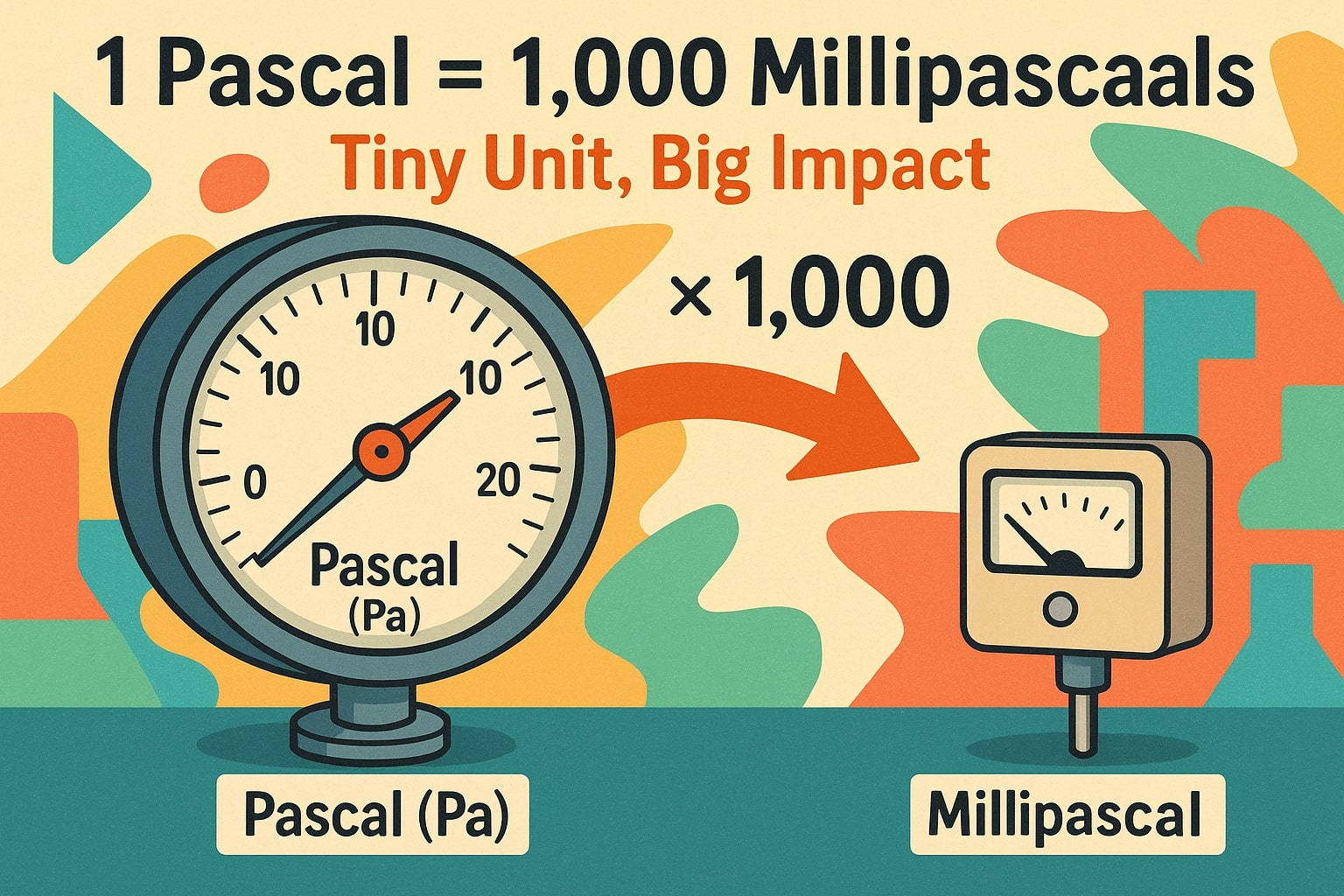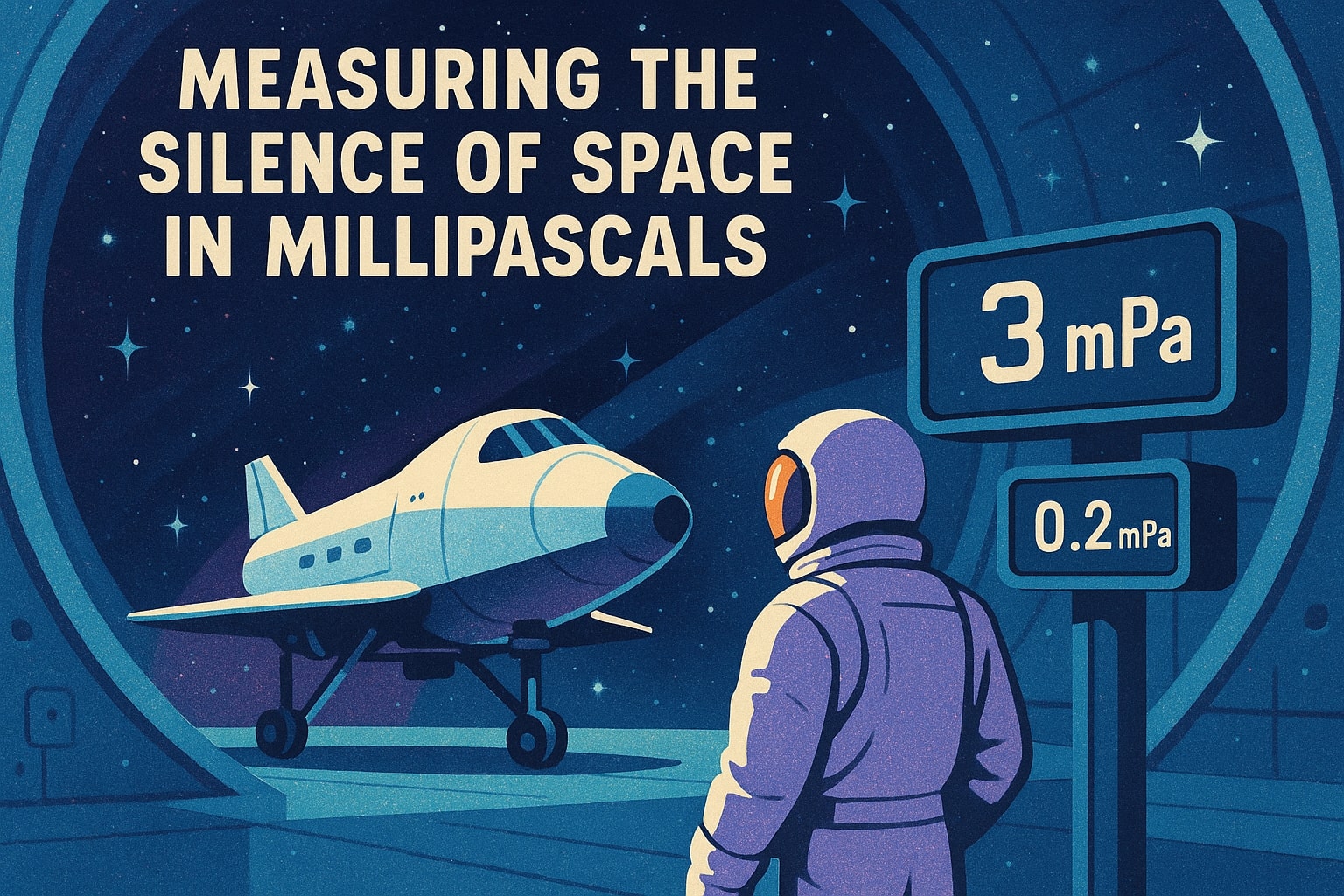Pascal to Millipascal – How to convert Pa to mPa
Need to convert pascal to millipascal? Both units measure pressure, but they operate at very different scales. Pascals are the SI standard for most industrial and scientific work, while millipascals are reserved for highly sensitive measurements, such as ultra-low pressure environments and laboratory research. Converting between them is simple, but knowing when each unit is used helps make sense of their roles in engineering and science.

What is a pascal (Pa)?
A pascal is the SI (International System) unit for pressure, defined as one newton per square meter. It’s used across physics, engineering, meteorology, and industrial testing to measure the force exerted per unit area.
Although it’s the standard, the pascal is relatively small when compared to everyday atmospheric pressures — normal air pressure at sea level is about 101,325 Pa, which is why kilopascals (kPa) are often used for readability in most applications.
What is a millipascal (mPa)?
A millipascal is a much smaller unit, equal to 1/1,000 of a pascal (1 × 10⁻³ Pa). This scale is so fine that it’s mainly used in specialized scientific contexts, such as testing vacuum chambers, sensitive membranes, or ultra-low-pressure environments where even tiny variations can make a difference.
While rare outside research and advanced engineering, millipascals help scientists quantify phenomena that ordinary pascal measurements would round off entirely.
How to convert pascal to millipascal
The conversion is straightforward:
1 Pa = 1,000 mPa
To convert:
Millipascals (mPa) = Pascals (Pa) × 1,000
Example: If a laboratory sensor records 0.25 Pa of differential pressure:
0.25 × 1,000 = 250 mPa
For quick calculations (especially when working with very small or large numbers), try our Pressure Converter or use other Conversion tools for instant results.
Did you know?
-
Vacuum technology: High-precision vacuum chambers used in semiconductor production often operate at pressures below 1 Pa, which engineers frequently express in millipascals for greater control.
-
Acoustic research: Studies of ultra-quiet environments, like soundproof testing labs, sometimes measure air pressure fluctuations in mPa, as these tiny changes can influence acoustic performance.
-
Space simulation: NASA testing facilities have recorded pressure readings in the millipascal range when simulating near-space and deep-space conditions for spacecraft.
-
Scientific instruments: Devices like atomic force microscopes (AFMs) can require readings in mPa when monitoring pressure effects at nanoscale levels.
Measuring the Silence of Space
In preparation for deep-space missions, NASA’s Johnson Space Center operates chambers designed to simulate the near-vacuum conditions astronauts will face. According to technical reports published by NASA Technical Standards, these chambers often maintain pressures of just a few millipascals, a fraction of Earth’s atmospheric pressure, to replicate the environment beyond our planet.
By tracking these ultra-low pressures in millipascals rather than pascals, engineers can fine-tune testing conditions, ensuring spacecraft systems will function reliably in space. Without this precision, critical equipment like propulsion systems and life-support components could fail in real conditions.
Converting for Precision
Switching from pascal to millipascal is as simple as multiplying by 1,000, but the two units reflect vastly different applications. Pascals serve most practical engineering, scientific, and industrial tasks, while millipascals are vital for extreme precision in labs, aerospace, and microengineering.
For seamless calculations, try our Pressure Converter or explore other Conversion tools to keep every measurement accurate, no matter how tiny the pressure difference.


